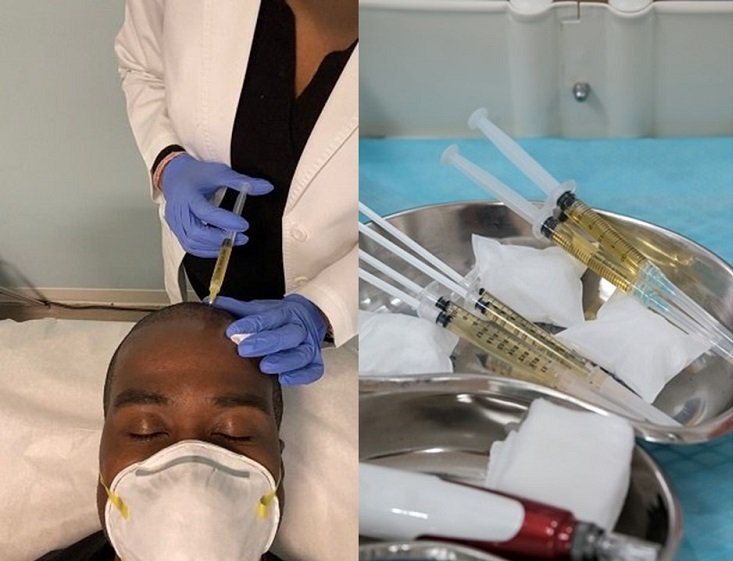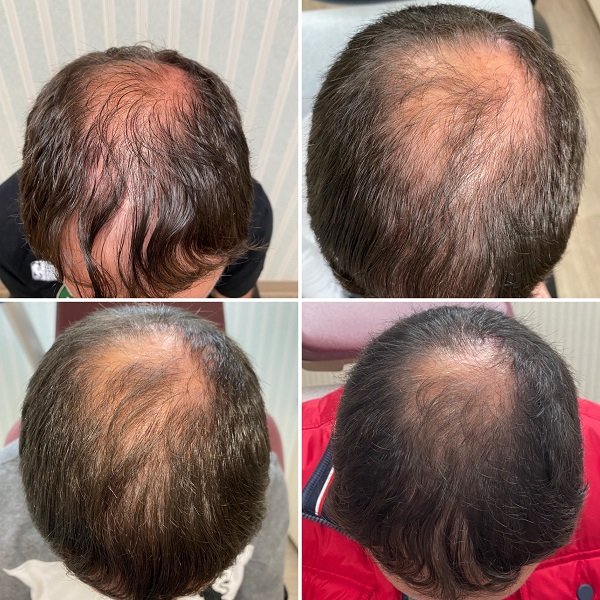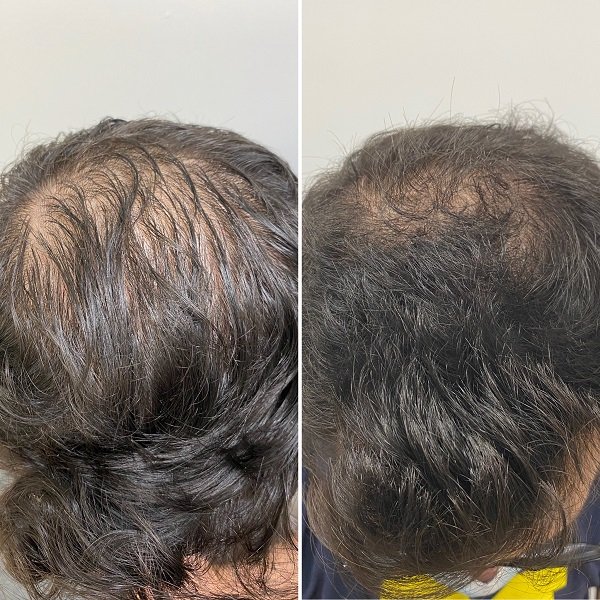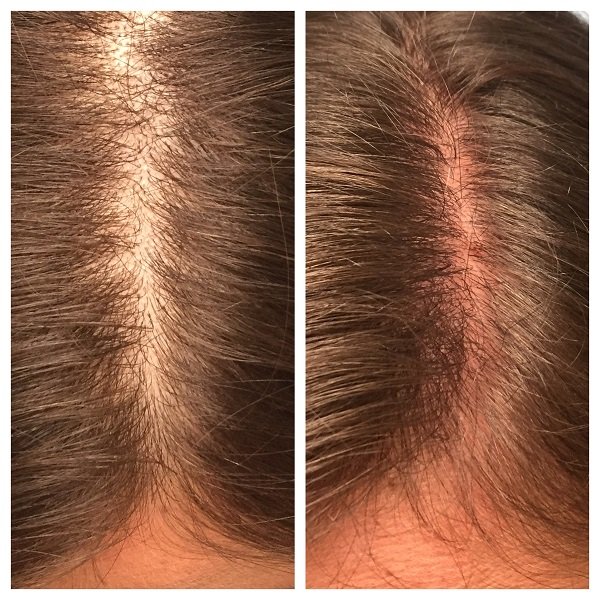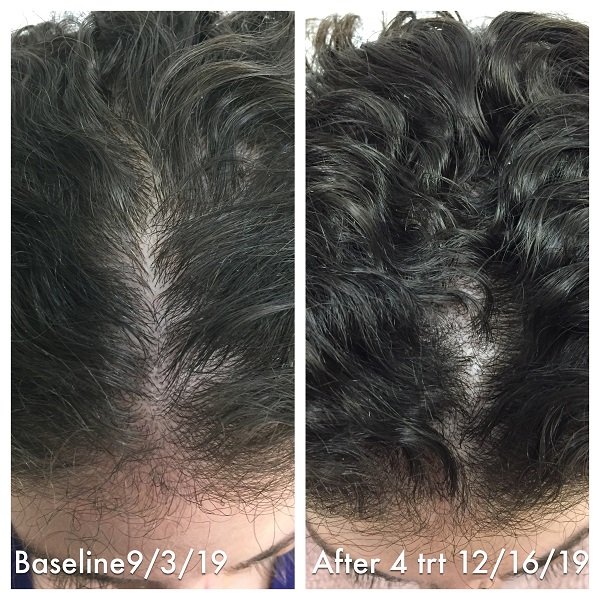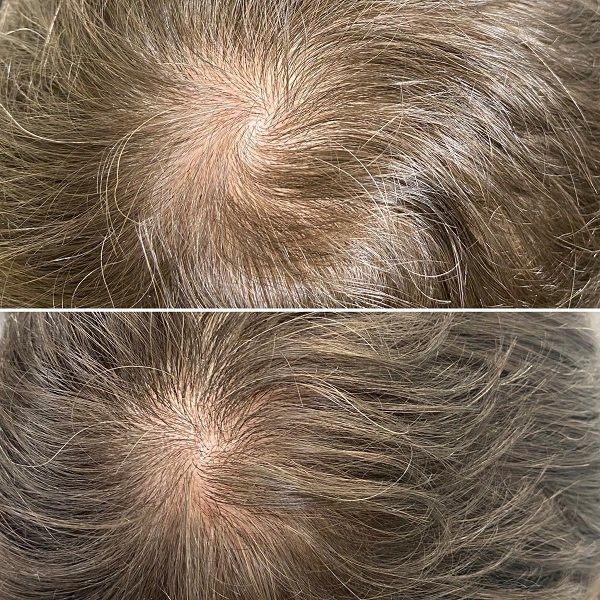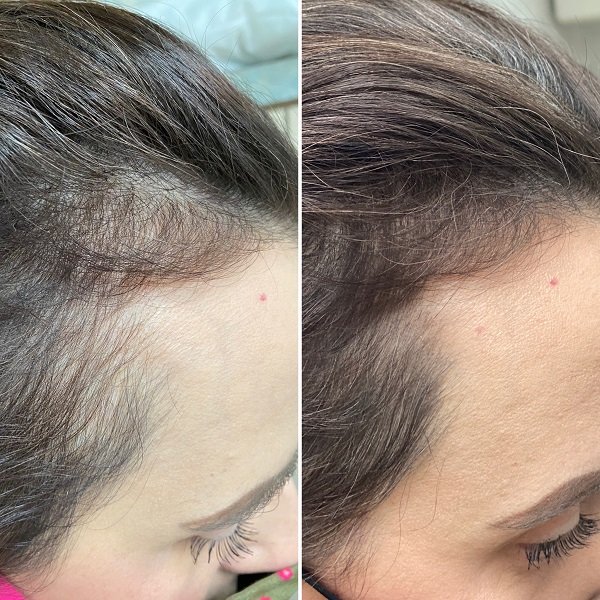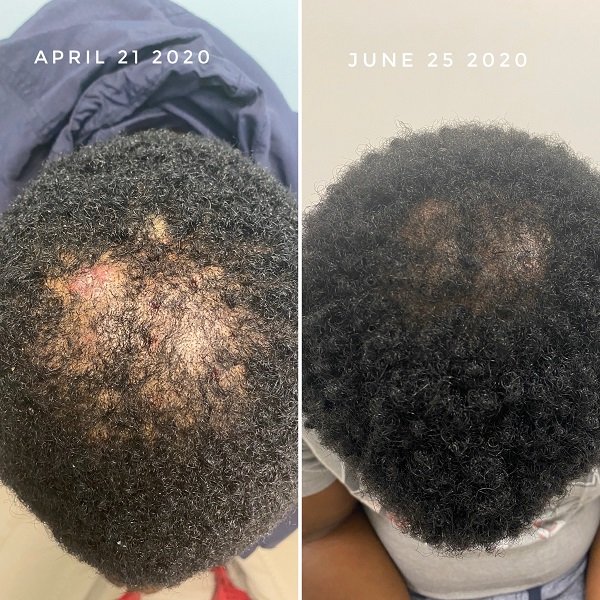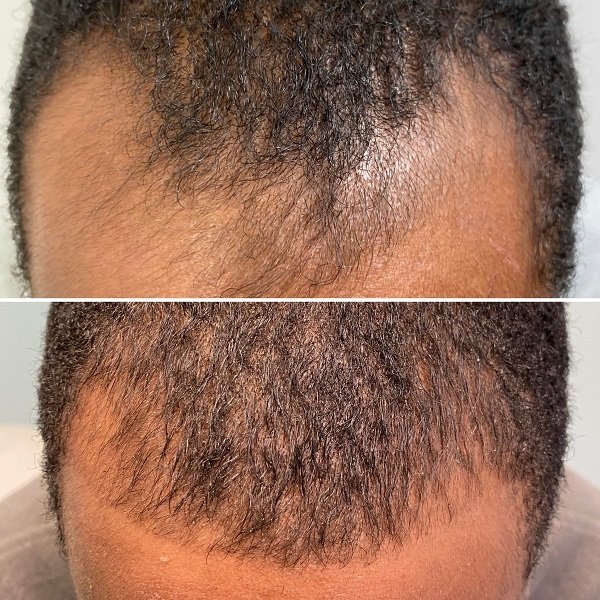PRP Hair Treatment
What Is PRP Therapy?
Platelet-Rich Plasma (PRP) is an injection therapy that uses a patient’s own natural growth factors to encourage regrowth and rejuvenation. PRP treatments originated in Europe and are also used in other areas of medicine including orthopedics and dentistry. In dermatology, we use PRP to help treat certain types of hair loss and for anti-aging treatments of the skin.
PRP treatment for hair loss typically requires three (3) to six (6) sessions spaced 4-6 weeks apart, followed by maintenance treatments at least twice a year. Results of the treatment should be assessed at 6 months. The first step is to see a dermatologist who will determine the cause of your hair loss and if PRP therapy could be an appropriate treatment for you.
What Are The 3 Steps Of The PRP Therapy Process?
Step One: Drawing Blood
A standard blood draw is done, usually from the arm. We advise being fully hydrated for this part.
Step Two: Processing Blood
Once your blood is drawn, it is taken to the in-office lab for processing. The tube of blood is placed in a centrifuge which will spin the blood and separate it into three sections. Once separated, the section of the blood with the highest concentration of platelet-rich plasma is drawn into multiple syringes. This process of separation takes about 20-30 minutes.
Step Three: Injections
Once the plasma is obtained and prepared, it is now ready to be injected into the scalp. The PRP will be injected back into the scalp in the areas of most concentrated hair loss. There are typically 12-15 injection points.
What Are The Side Effects Of PRP Therapy?
PRP therapy is a low-risk procedure and does not typically cause major side effects. The procedure involves a blood draw, so you should make sure you are well hydrated and have eaten beforehand to prevent feeling lightheaded. However, any injections runs the risk of side effects which may include:
Bruising or swelling at the site of the blood draw
Mild tenderness of the scalp
Pinpoint bleeding at the injection points
Finding The Right Care
Dr. Monica Rani and the Advanced Dermatology and Aesthetic Medicine team, located in the South Loop of Chicago, can evaluate your condition thoroughly and identify the best PRP therapy treatment plan for your specific needs. They specialize in educating and working with all patients to provide the best care possible so you can go on living your best life. Contact us today to schedule your consultation.
FAQs About PRP Therapy
-
PRP stands for Platelet-Rich Plasma. Platelet-rich plasma consists of plasma, or the liquid portion of blood, and platelets, a type of blood cell that plays an important role in rejuvenation and healing throughout the body. Platelets not only help form clots, but they also contain growth factors that can trigger cell reproduction and stimulate tissue regeneration or healing in the treated area.
-
Give yourself about 1 hour to spend in our clinic to complete the procedure from start to finish. PRP is recommended as a series of treatments spaced 4-6 weeks apart, 3-6 sessions may be recommended based on the extent of hair loss.
-
For optimal results, PRP therapy maintenance may be recommended every 3-6 months, but this is determined on a case-by-case basis.
-
It is recommended that you avoid taking any NSAIDs (OTC: ibuprofen, Advil, Aleve, aspirin, prescriptions: Celebrex and ketorolac) 5-7 days prior to your appointment unless it was prescribed These drugs interfere with the platelet’s ability to stick together which may render the PRP less concentrated with the use of these drugs. We also recommend coming to your appointment well hydrated. This will allow for ease of the blood draw.
-
After your PRP for hair loss injections, you may notice some pinpoint bleeding at the site of injections, this should stop fairly quickly after the treatment is over. Topical treatments may be resumed the same day after treatment unless directed otherwise by your provider.
We do recommend refraining from showering, working out, styling your hair, and other hair products for 4 hours after treatment. Avoid ibuprofen and NSAIDs for 7 days after your treatment.
-
PRP has been used in other areas of medicine, particularly in orthopedics for joint discomfort and tissue regeneration. In dermatology, PRP is used, not only for hair loss but also for wound healing after micro-needling and other resurfacing treatments as well as facial rejuvenation.

